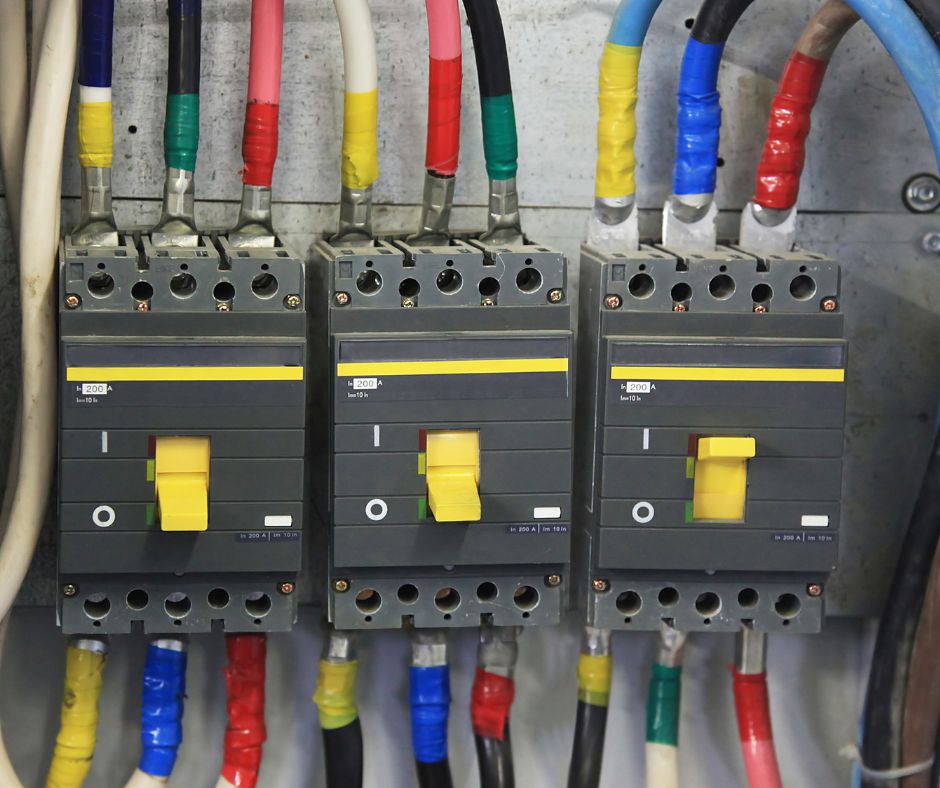The Critical Role of Electrical Insulation Tape in Ensuring Electrical Safety
Electrical insulation tape is an essential element in promoting safety and insulation for various types of electrical wires and cables. Often referred to as insulating tape, this critical tool is indispensable across both professional and home settings. Its primary function is to prevent electrical shorts while safeguarding against moisture, dust, and abrasion. By understanding the significance of this tool, you can effectively avoid potential hazards and maintain a well-organized, efficient workspace, thereby enhancing overall safety in electrical installations.
Electrical insulation tape comes in a wide variety of sizes, lengths, and colors, with materials specifically designed for different applications. These diverse options not only improve insulation effectiveness but also help streamline the organization of cables through color-coding. By utilizing different colors, you can enhance your electrical work processes, allowing for quicker identification of specific wires. This approach ultimately boosts your productivity and maintains a tidy workspace, making it easier to manage complex electrical tasks efficiently.

Assessing the Conditions That Cause Electrical Tape to Melt
It is indeed possible for electrical tape to melt under certain conditions. In this article, we will thoroughly explore the critical temperature thresholds associated with electrical tape, outline the specific conditions that may lead to melting, and highlight the key signs of overheating that warrant close attention. Being aware of these factors is vital to ensuring the safe and effective application of electrical insulation tape in various settings and applications.
Maximizing the Performance of Electrical Tape: Understanding Temperature Limits
Like many materials, electrical tape has defined temperature limitations that are crucial for safe usage. Most standard electrical tapes can typically withstand temperatures up to approximately 80°C, while some heavy-duty varieties are engineered to tolerate slightly higher temperatures. When the surrounding conditions exceed these limits, the tape's structural integrity may begin to deteriorate, potentially leading to failures in its insulating properties.
As the temperature escalates toward its upper limit, the effectiveness of electrical tape diminishes significantly. This degradation can manifest through various symptoms, including melting, a gooey texture, or, in extreme instances, complete failure of the tape. Being cognizant of these temperature boundaries is essential for ensuring safety and efficacy in electrical applications, allowing you to complete your projects without unnecessary risks or complications.
In extreme environments, it is advisable to consider high-temperature variants of electrical tape. For example, heat-resistant tape, made from materials such as fiberglass or silicone, can endure temperatures reaching 200°C or higher, making it an excellent choice for applications subjected to intense heat and demanding conditions.
Also Read: Keep Your Pets Safe Around Electricity
Get Your Quote Now!
Ask About Our FREE Electrical Inspections

Key Factors That Lead to the Melting of Electrical Tape
Electrical tape can melt due to several factors, primarily arising from exposure to excessive heat. Understanding these causes is essential for ensuring safe and effective usage of the tape. Here are some common reasons that contribute to the melting of electrical tape:
The Impact of Excessive Heat on Electrical Tape Performance
The most significant factor contributing to the melting of electrical tape is its exposure to high temperatures. If the tape is located near hot surfaces, engines, or any equipment that generates heat, it may start to soften, bubble, or even fully melt away. Additionally, electrical systems, such as power circuits, can generate more heat than the tape is rated to tolerate, particularly during overload situations or malfunctioning scenarios.
Therefore, when applying electrical tape in areas prone to high temperatures, it is prudent to verify the temperature ratings of the tape being used to avoid potential failures and maintain safety standards.
Environmental Factors That Cause Degradation of Electrical Tape
Electrical tape is not intended to last indefinitely. Over time, both the adhesive properties and the tape material can degrade, especially when exposed to UV radiation, moisture, or other harsh environmental conditions. Such degradation can considerably reduce the insulating capabilities of the tape. As the tape ages, it may become less effective and increasingly susceptible to melting even at lower temperatures than it would normally withstand.
Regular wear and tear is an expected part of the lifespan of electrical tape. Consequently, it is imperative to routinely inspect the tape for signs of aging or damage to ensure ongoing safety and performance in any electrical application.
Risks Associated with Improper Application of Electrical Tape
Applying electrical tape under suboptimal conditions can lead to premature failure. For instance, wrapping the tape too tightly, exposing it to friction or heat, or overstretching during application can compromise its performance. Additionally, wrapping the tape around sharp edges or applying it to components that are prone to overheating, such as light bulbs or electrical outlets, can create problems unless the tape is specifically rated for those applications.
Also Read: 10 Ways to Save On Power And Energy Costs
Recognizing Signs of Overheating Electrical Tape
If you suspect your electrical tape is experiencing overheating, several key indicators should be monitored. Here are the most common signs that your tape may be melting or undergoing excessive heat exposure:
Identifying a Sticky or Tacky Texture in Malfunctioning Tape
A prominent change in texture, particularly a sticky or tacky feel, is often one of the initial indicators of melting electrical tape. This alteration can serve as an early warning sign of further degradation, suggesting that the tape may no longer provide adequate insulation for electrical applications.
Detecting Discoloration as a Sign of Heat Damage
Overheating electrical tape may show significant discoloration. You may notice a shift from its original black or colored appearance to shades of brown, dark gray, or even black. This transformation occurs as heat causes the tape’s PVC or other materials to degrade. Early identification of this issue can prevent further harm to your wires; if left unattended, it could result in melting or even pose fire hazards.
Observing Bubbling or Distortion as Indicators of Excessive Heat
If electrical tape begins to bubble, distort, or warp, it serves as a clear signal that heat is adversely affecting its structural integrity. This typically occurs when heat causes the adhesive or plastic layers to separate or degrade. The surface may appear uneven or wavy, indicating that temperatures are exceeding safe limits. Upon noticing these changes, it is advisable to consult your electrician for a thorough evaluation.
Identifying a Burning Smell as a Serious Warning Signal
A burning smell in proximity to electrical tape is a critical warning sign that should not be ignored. This odor may resemble melting plastic or burning rubber. When excessive heat causes the adhesive to break down, it can release concerning fumes. Do not overlook this alert. If you detect a burning smell, it may indicate that the tape is close to melting or even catching fire.
Visible Smoke as a Major Warning Indicator
If you observe smoke emanating from the electrical tape, it is a definitive sign that the heat levels have significantly surpassed what the tape can endure. Smoke is a strong indication that the tape has likely started to melt or may even be igniting. In such a critical situation, it is essential to immediately turn off the power source and contact your electrician for urgent assistance.
Remember – Never use water to extinguish an electrical fire. Instead, utilize a CO2 fire extinguisher for safety.
Safety Steps to Follow if Electrical Tape Melts
In the event that your electrical tape melts, the first step is to immediately disconnect any power sources or turn off any relevant equipment to ensure safety.
Prioritizing safety is paramount, as electrical hazards can pose severe risks to both life and property.
After confirming that the area is safe, always seek guidance from your electrician for expert advice. If a professional initially installed the tape, they may need to inspect the area for any underlying electrical issues that could have contributed to the problem, ensuring comprehensive safety and functionality in the electrical system.
Exploring Alternatives to Electrical Tape for High-Temperature Applications
If you frequently operate in environments where temperatures exceed the limitations of standard electrical tape, it is wise to consult your electrician about suitable alternatives. Consider the following options:
- Heat-resistant silicone tape: Specifically designed to endure elevated temperatures, this tape is ideal for applications where heat poses a significant challenge.
- Fiberglass tape: A resilient option that can withstand extreme temperatures without compromising performance or safety.
- Mica or ceramic insulation: For the highest level of heat protection, specialized insulations such as mica or ceramic are excellent choices.
Essential Considerations Regarding the Risks of Melting Electrical Tape
In summary, electrical tape can indeed melt, primarily due to excessive heat exposure. Understanding the temperature limits of your tape and ensuring you select the appropriate type for your specific application are crucial steps in preventing potential issues.
By remaining vigilant about signs such as discoloration, stickiness, or unusual odors, you can take prompt action to mitigate risks. Always prioritize safety and do not hesitate to reach out to your local electrician for expert advice when necessary.
Get Your Quote Now!
Ask About Our FREE Electrical Inspections

The Article: Does Electrical Tape Melt? Here’s What You Need to Know first appeared on https://writebuff.com
The Article Electrical Tape Melting: Essential Facts You Should Know Was Found On https://limitsofstrategy.com

It’s fascinating how something as simple as electrical insulation tape can play such a crucial role in safety and organization in our electrical work. I recently tackled a DIY project at home, and having various colored tapes made it so much easier to identify the wires and connections. It not only streamlined my process but also provided an extra layer of security, knowing that everything was properly insulated.
It’s great to hear about your experience with colored electrical insulation tape! It really is remarkable how a simple tool can make such a difference in managing wires. Using different colors not only helps in keeping track of connections but also adds a bit of fun to the project.
I love how you’ve highlighted the importance of electrical insulation tape! I often find myself using it not just in wiring projects but even in organizing my workspace. Color-coding cables with different types of tape really does make a difference in keeping everything neat and easily accessible.
Your insights on the importance of electrical insulation tape are both timely and relevant, especially as we navigate an increasingly electrified world. I’ve often found that the conversation around electrical safety and organization doesn’t get the attention it rightly deserves. While many might view insulation tape as a mundane tool, its role truly extends far beyond that perception—we’re talking about a material that stands between us and potential electrical hazards.